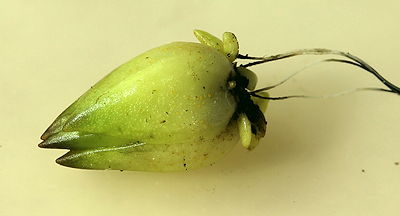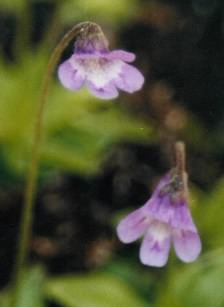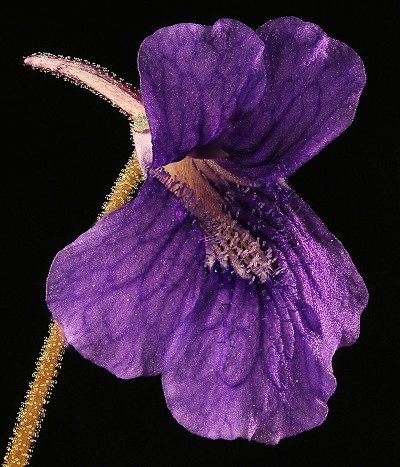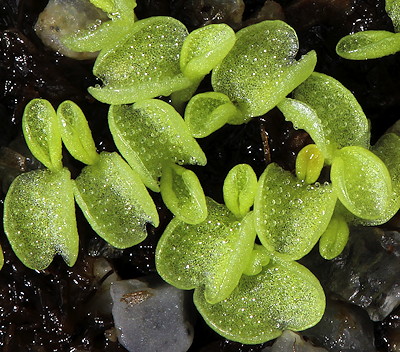Most of the cold temperate Pinguicula prefer acid soils. They respond well to a mixture of two parts peat, one part silica sand, one part perlite and one part vermiculite.
Cold temperate Pinguicula seeds need temperatures from -10°C to 5°C (14°F to 40°F) for 8 to 12 weeks to germinate. CP-growers in regions with cold winters can sow the seed outside in pots on there preferred soil mixture at the beginning of autumn. In spring place the pots in a bright sunny location. Normally the seed starts to germinate between March and May. The soil must always be very damp!
For seeds to be started indoors or in a greenhouse, the seed should be stratified in the refrigerator. It is best to do this during the winter and to have the seedlings under a natural light cycle so that the seedling are in phase with the seasons. The method that uses the least space in the refrigerator is to place the seeds in a small plastic bag with a few large pinches of damp peat. Keep the seed in coldest part of the refrigerator for 8 to 12 weeks.
After the first winter of growing, the plants should be separated when growing too near to each other. Attention: the plant needs cold winter temperatures to survive!
For more information please see:
Mrkvicka, Alexander (1990) European Pinguicula species taxonomy - distribution - cultural conditions. Carniv. Pl. Newslett. 19(1-2):41-43 ( PDF )
Lamb, Randy (1991) Pinguicula villosa: The northern butterwort. Carniv. Pl. Newslett. 20(3):73-77 ( PDF )
Meyers-Rice, Barry (2002) Cold Pinguicula in a Hot Climate. Carniv. Pl. Newslett. 31(1):25-27 ( PDF )
Legendre, Laurent and Thomas Cieslak (2007) Pinguicula vulgaris L. in the Champagne state of France: life in an alkaline bog. Carniv. Pl. Newslett. 36(4):104-113 ( PDF )

Pinguicula grandiflora winter hibernacula with gemmae at the base.

Pinguicula vulgaris flowers

Pinguicula grandiflora flower.

Pinguicula grandiflora seedlings. These seedlings were stratified outside during the winter (in a metal box to protect them from rain and animals) then germinated under lights indoors following a natural light cycle. This winter they will go back outside without protection.
